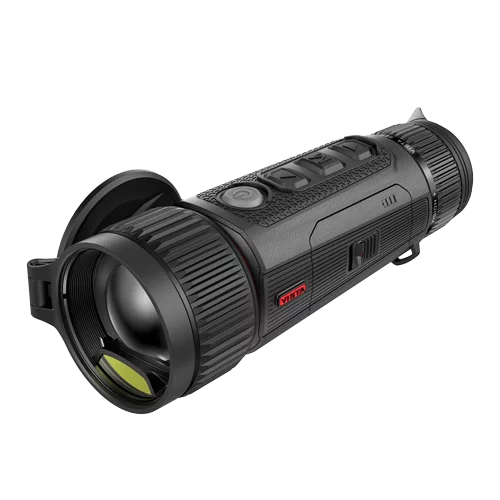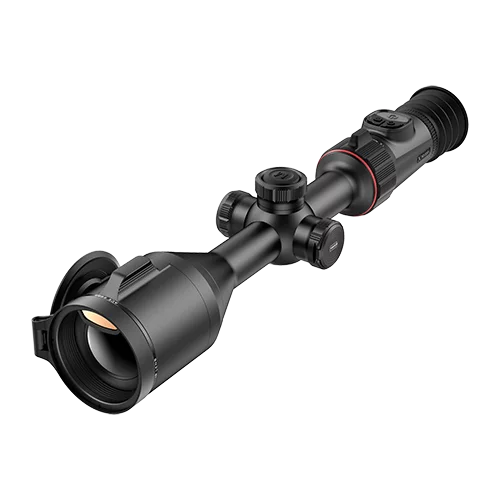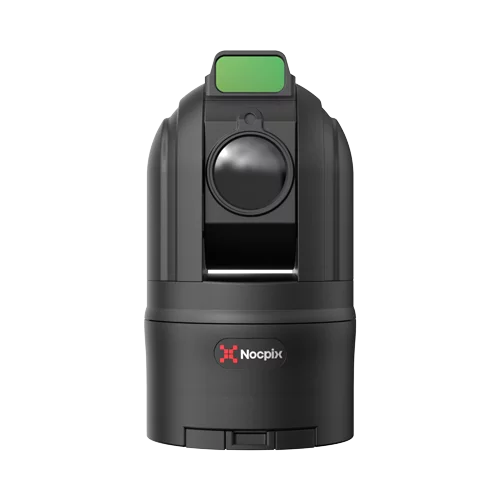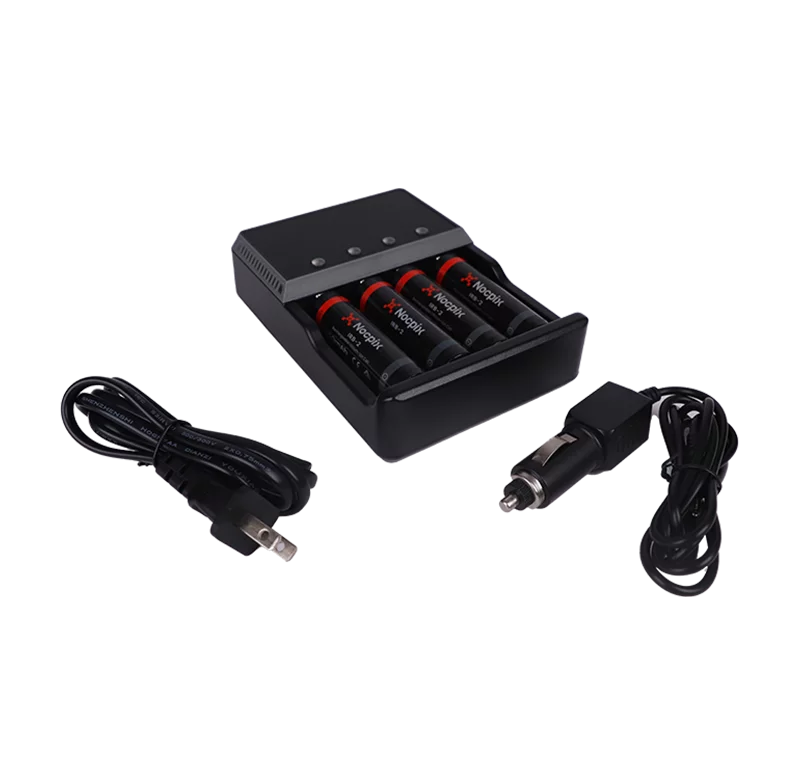The sensor is the heart of a uncooled thermal imaging device. It absorbs the infrared radiation emitted by objects, causing changes in the resistance of heat-sensitive materials. A special integrated circuit (ASIC) amplifies these resistance changes through interconnected electrodes and converts it into an electrical signal. Next, the processor further transforms this signal into an analog image signal, which is finally displayed on the screen. Key technical parameters of the detector include array size or resolution, pixel size, noise equivalent temperature difference (NETD), and operating frame rate.
The array size indicates the image resolution. The larger the array size of the sensor, the higher the image resolution, resulting in clearer images. Common array sizes include256×192, 384 × 288, 640 × 512, and 1280×1024.

The pixel pitch of a sensor refers to the distance between the centers of adjacent pixels, also known as pixel size, and is usually measured in micrometers (μm). The smaller the pixel size, the higher the spatial resolution of the sensor, allowing it to distinguish smaller objects or details better. Additionally, smaller pixel size can enhance the sensor’s sensitivity to infrared radiation, as each pixel can capture incoming infrared light more effectively. Currently, most sensors on the market have a pixel size of 12μm.
NETD, also known as the sensor sensitivity, is related to the sensor design and thin-film materials. The smaller the NETD, the higher the sensitivity of the sensor, allowing it to detect smaller temperature differences. This means it can provide clearer images in low-contrast scenes. Currently, most sensors on the market have a NETD of sub 20 to 40 millikelvins (mK).
Frame rate refers to the number of image frames the sensor can capture and process per second. The higher the frame rate, the smoother the display. In fast-moving objects or scenes, a high frame rate helps capture details better, allowing users to make more accurate judgments. Most products on the market have a frame rate of no less than 50Hz.
The R&D team at Nocpix has been dedicated to the field of thermal imaging for 15 years. The sensors they made not only include standard array sizes of 256×192, 384×288 and 640×512 but also feature an industry-leading array size of 1280×1024. Furthermore, the team has mastered cutting-edge technologies and innovations to ensure key specs surpass those of other products on the market, including a pixel size of 8 um, a NETD of less than 15mk, and a frame rate of 60 Hz.

Our sensor uses a thermal sensitive material made from Vox film, which has a higher temperature resistance coefficient(TRC). This makes it more sensitive to temperature changes, lowering the noise equivalent temperature difference (NETD) to less than 15mK. This material is widely used in high-end devices that require precise temperature monitoring and control. For example, in the aerospace field, high TRC materials are key components of spacecraft thermal control systems, allowing real-time monitoring and adjustment of the spacecrafts’ temperature in the extreme temperature changes of space, protecting electronic devices and other sensitive parts. In the medical equipment field, this material is used to monitor the temperature of MRI coils and cooling systems, enhancing imaging quality and extending the lifespan of the equipment.
Our specially designed MEMS and ASIC are cutting-edge innovations in the industry. They significantly reduce interference from photoelectric signals and minimize signal transmission loss. This ensures that our imaging system delivers high-quality images.
The novel package method called MINI packaging makes the sensor smaller and perform better in receiving infrared radiation between 8-14um wavelength.
Equipped with such powerful sensor and lens of F0.9, which allows 20% more light compared to the F1.0, our product captures the slightest temperature variations. Yet it is not our limit. The cutting-edge algorithms called Reality + virtually brings the upper bond of imaging quality to another level, giving hunters unprecedented clarity they’ve never seen before even in the most challenging outdoor environments.

Our sensor not only excels in imaging quality but also stands out for its stability and durability. Our R&D team has made significant upgrades to its design and materials. The MINI packaging features a high-vacuum, long-life design with a 2-row pin configuration, which helps prevent damage to the connector and housing. Plus, it’s easy to replace, making repairs more efficient and cost-effective for users. On top of that, every sensor undergoes strict quality inspections and rigorous testing. This commitment to quality allows us to confidently extend the warranty period of the sensor to 10 years.
With all these features, Nocpix’s cutting-edge sensor provides unbeatable imaging quality, whether it’s nighttime, thick fog, heavy rain, or any other tough conditions. This helps hunters see and hit their targets more effectively.






